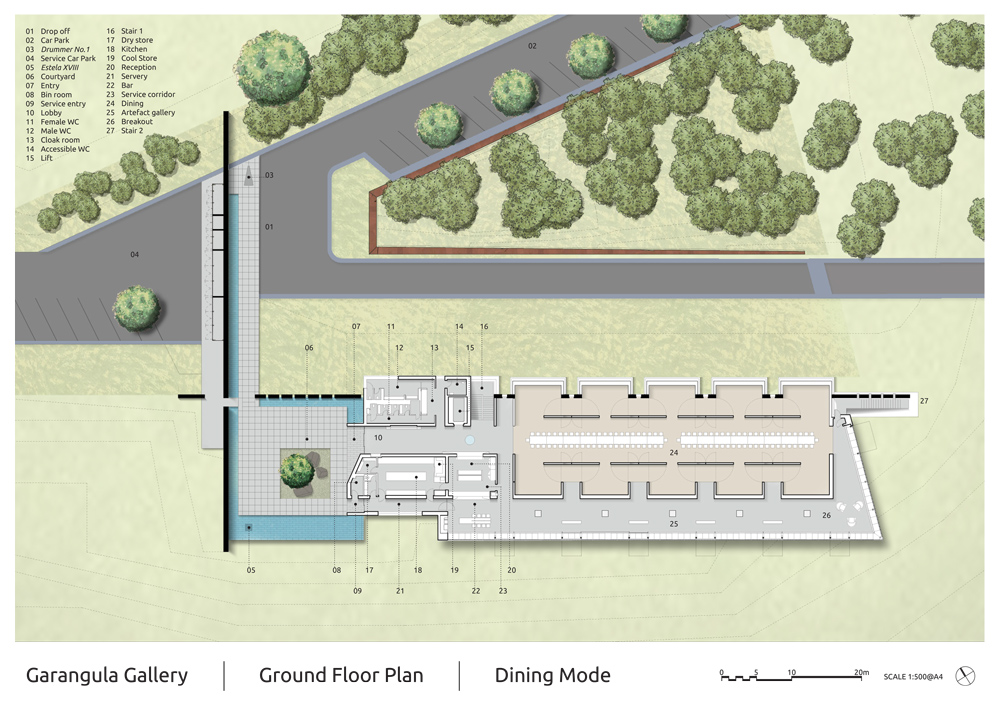- Share
- Like
- Tweet
- Digg
- Tumblr
- VKontakte
- Love This
- Odnoklassniki
- Meneame
- Blogger
- Amazon
- Yahoo Mail
- Gmail
- AOL
- Newsvine
- HackerNews
- Evernote
- MySpace
- Mail.ru
- Viadeo
- Line
- Comments
- SMS
- Viber
- Telegram
- Subscribe
- Skype
- Facebook Messenger
- Kakao
- LiveJournal
- Yammer
- Edgar
- Fintel
- Instapaper
- Copy Link
Australian based Fender Katsalidis Mirams Architects (FKM Architects) have designed a gallery that takes visitors through a story-telling space, just like the art it showcases. The Garangula Gallery introduces visitors to a visual experience into the world of aboriginal art, through a contemporary fusion of art and architecture, imbued with history and meaning.
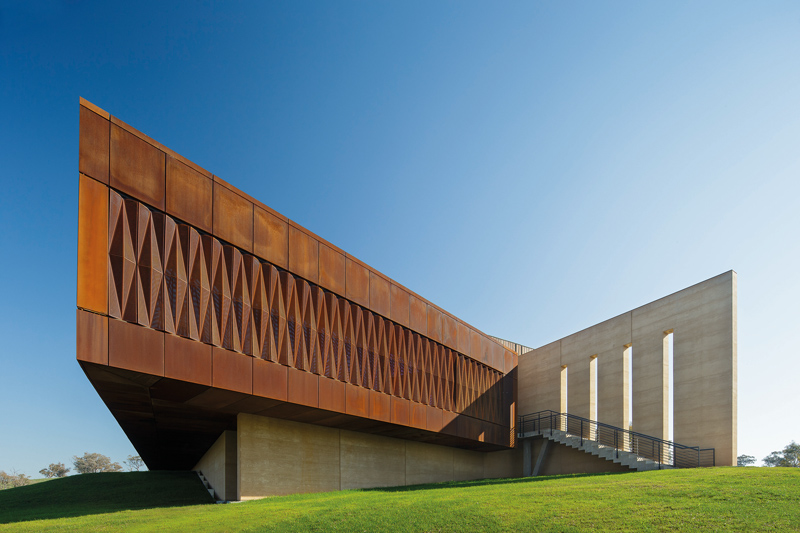
Image © John Gollings
The scope of the project was to design a space that will house 100 works of aboriginal art and that will cater for 100 people for dinner. The architects faced the challenge of creating a space that reflects the serene atmosphere necessary in experiencing art, combined with the energy and space required for large gatherings.
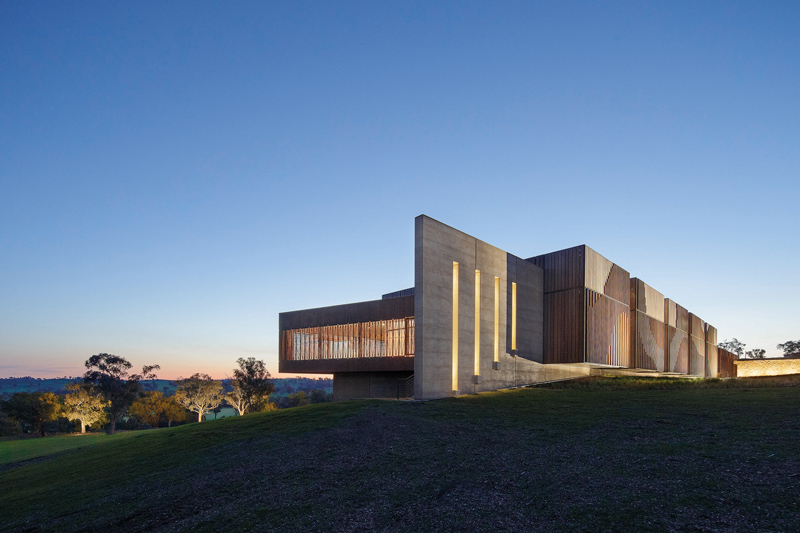
Image © John Gollings
The building became a chameleon; a place which adapts to changing circumstance through flexible manipulation of space.
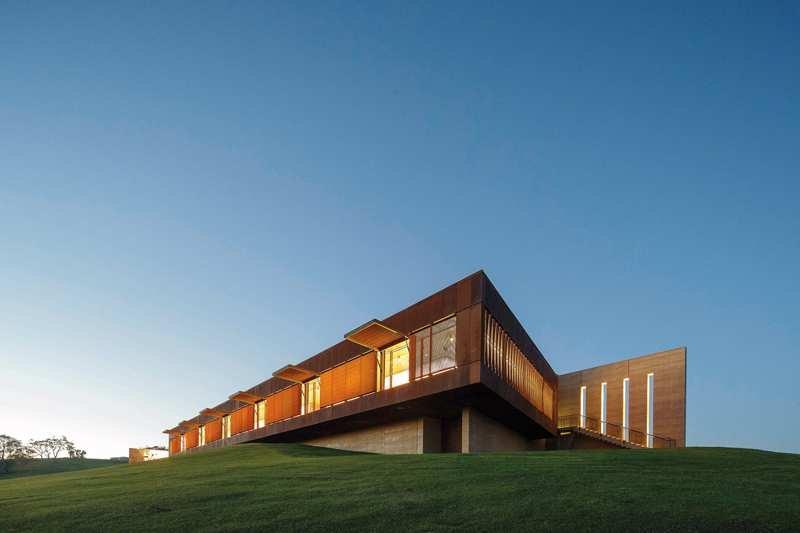
Image © John Gollings
Garangula is located on the Ngunnawal side of the border between the Ngunnawal and Wiradjuri tribal lands that feature several dams, polo fields, formal gardens, agriculture, sculpture and many buildings. The distant views of mountain tops and valleys add to the entire experience and create the perfect setting for emerging yourself into art. The building follows the natural contours of the site, making it appear as it rises from the landscape, with elevated areas that overlook the valleys and mountain tops.
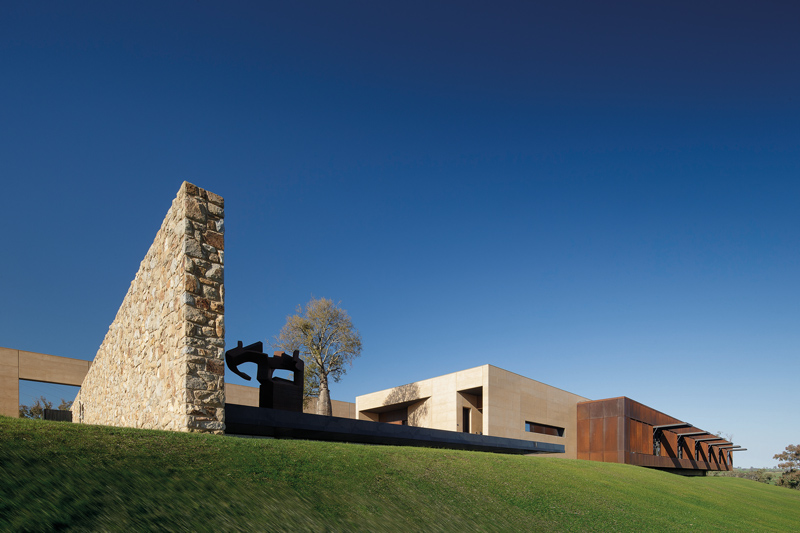
Image © John Gollings
Water is a precious commodity at Garangula and its passage through the site creates an intricate arterial network. The gallery lies on axis between dams elevated above and in the valley below. Water therefore emerges as an important element throughout external spaces around the gallery.
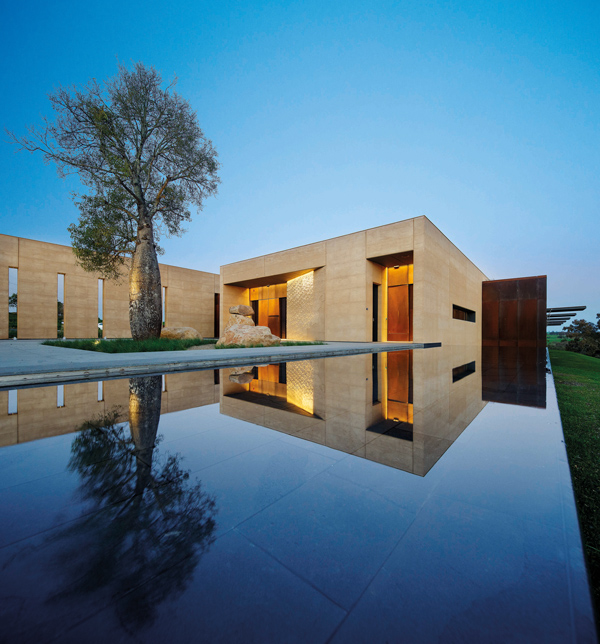
Image © John Gollings
As an homage to Aboriginal rock engravings and cave painting dating over 50,000 years old, the architects designed five galleries throughout the space to represent ‘artist, time, place, subject and meaning’. ‘They punctuate the building façade as repetitive counterpoints to nature, often created by industrial components in rural landscapes’, describe the architects.
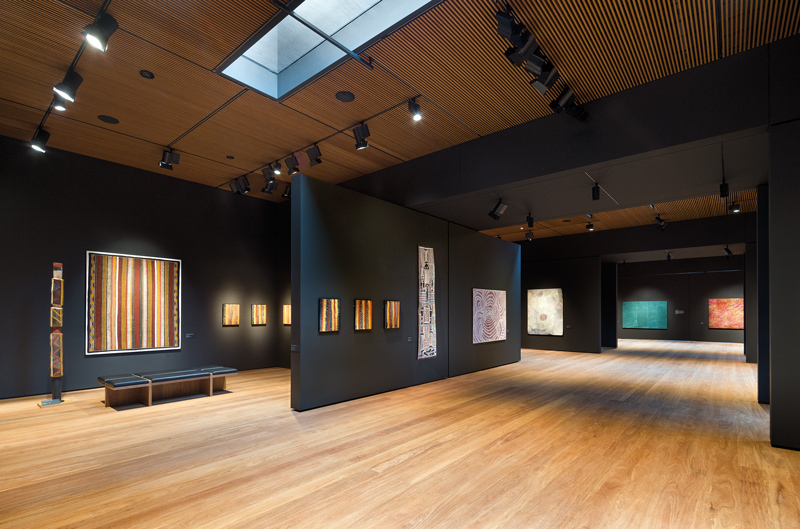
Image © John Gollings
The galleries have been naturally lit from above, with the light directed to the floor to animate the space, while artificial light was used to enhance the wall space. Gallery volumes connect with each other through interstitial spaces, featuring narrow slot windows as a constant reminder of the stunning surrounding landscape.
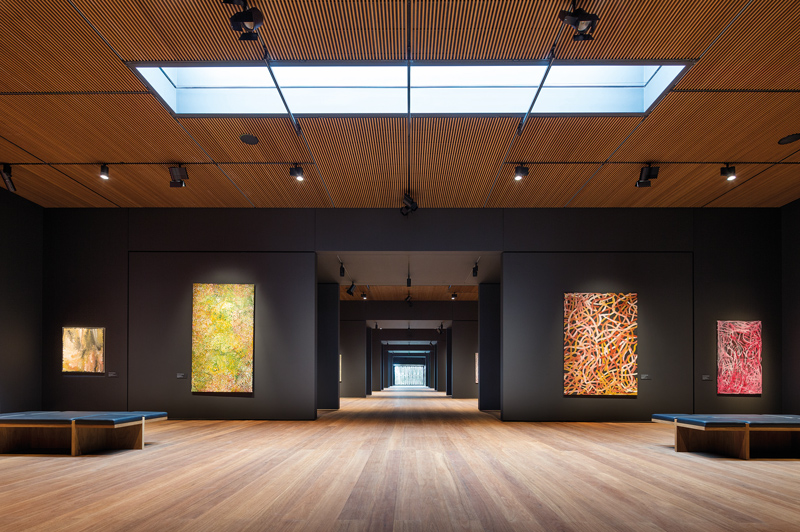
Image © John Gollings
The materials used throughout the gallery are a constant connection to the existing landscape and existing buildings. The façade of each gallery was cladded in recycled ironbark, while stone, timber and weathered steel are used throughout the space.
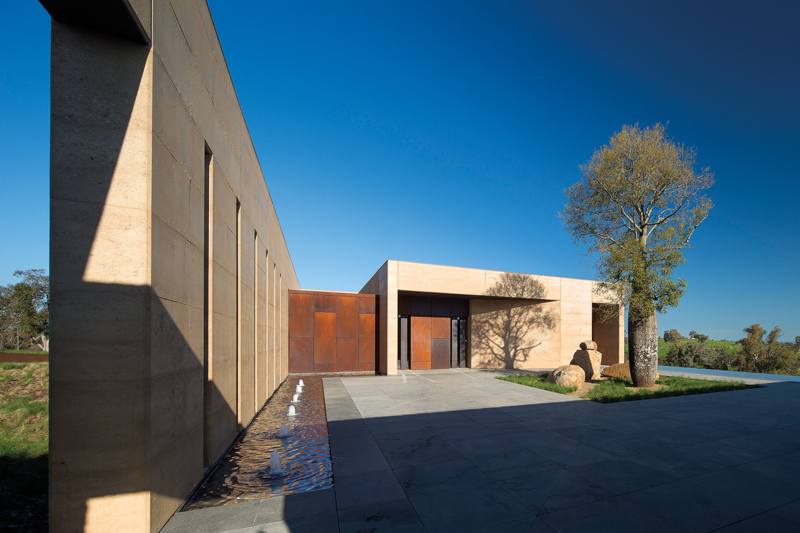
Image © John Gollings
The road to the entrance of the gallery is an experience in itself. Approaching the courtyard, visitors experience a serene atmosphere with water trickling along the base of a stone wall, leading to the focal point: a weathered steel sculpture by Eduardo Chillida.

Image © John Gollings
Stepping into the gallery, visitors are welcomed into a transitional space for adaptation to lower level lights. The five galleries are separated by large pivot doors used to transform the space into one large dining hall, with art showcased on each side of the centrally placed dinner tables.
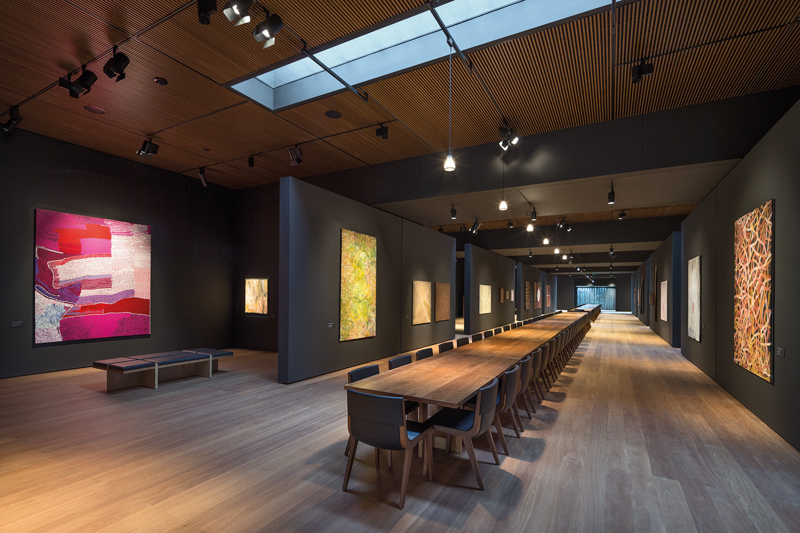
Image © John Gollings
The lower levels of the gallery are accessed via a polished off form concrete stair or a lift of blackened stainless steel. Though the lift travels just one level down, the notion is of a journey to the centre of the earth. The destination is an opal and silver gallery featuring boulders quarried from the site. The space is entered via sliding steel doors operated by walking past a commemorative plaque.
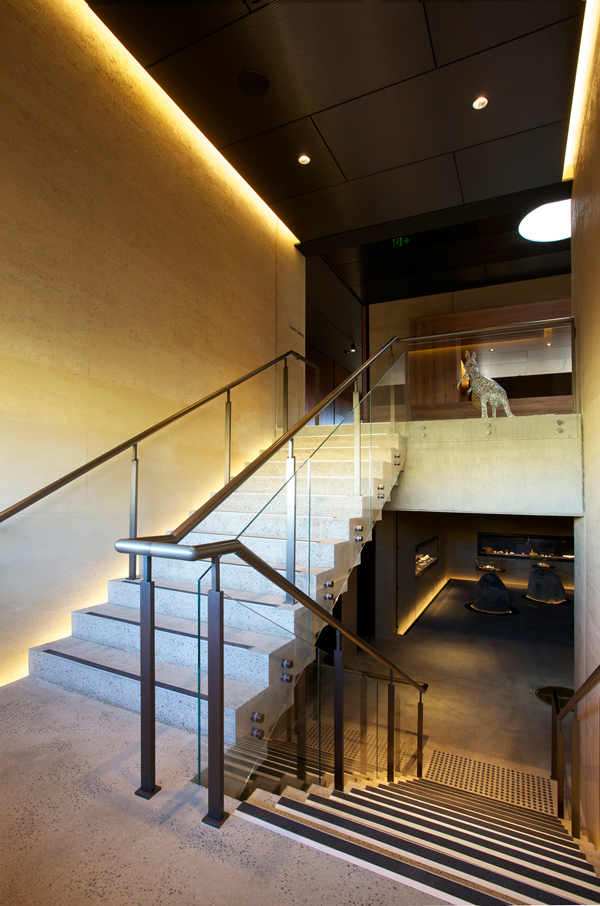
Image © Maite Robin
Recycled materials, weathered colour palette and rich symbolism throughout the space make the Garangula Gallery seem like an extension of the remarkable landscape. The building is a space of contemplation where art, nature and architecture live in harmony.
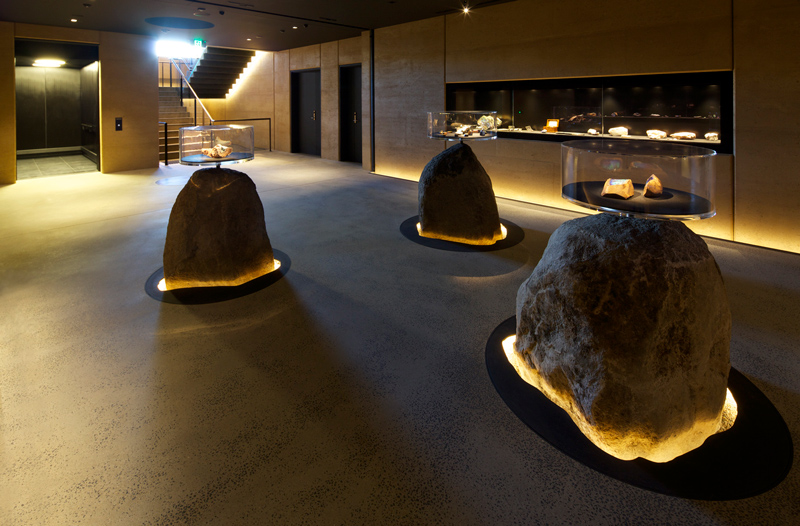
Image © Maite Robin
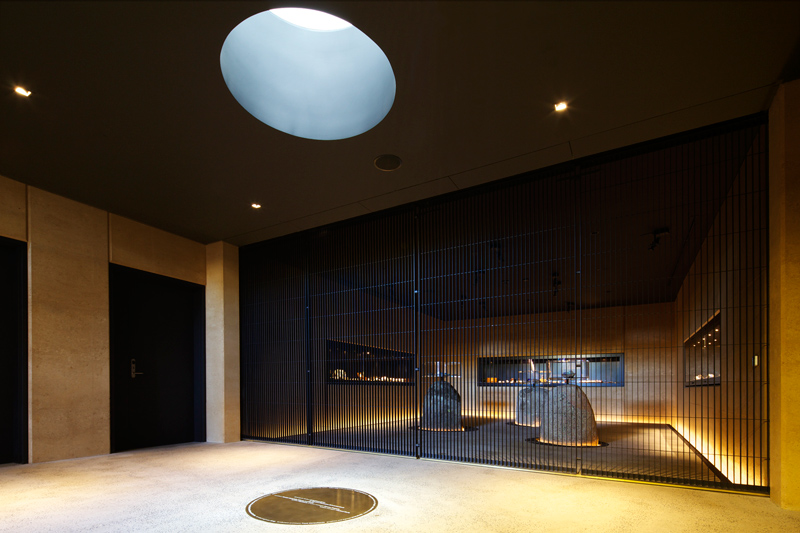
Image © Maite Robin
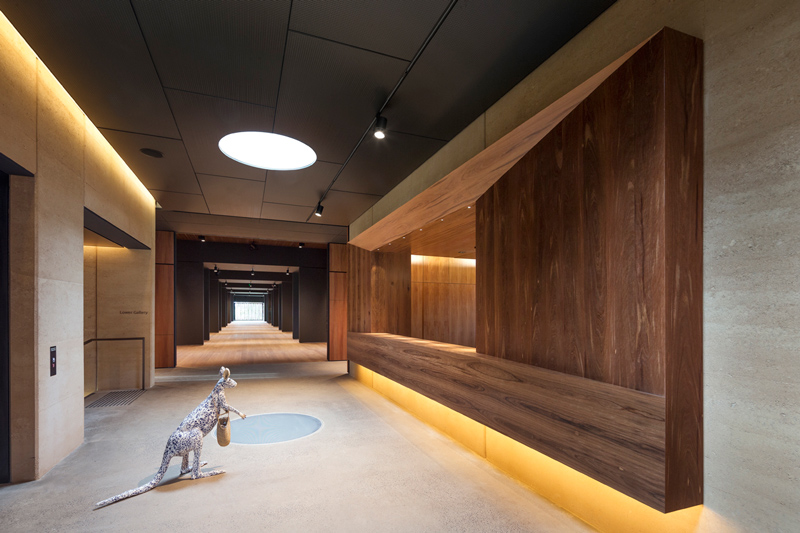
Image © John Gollings

Image © John Gollings
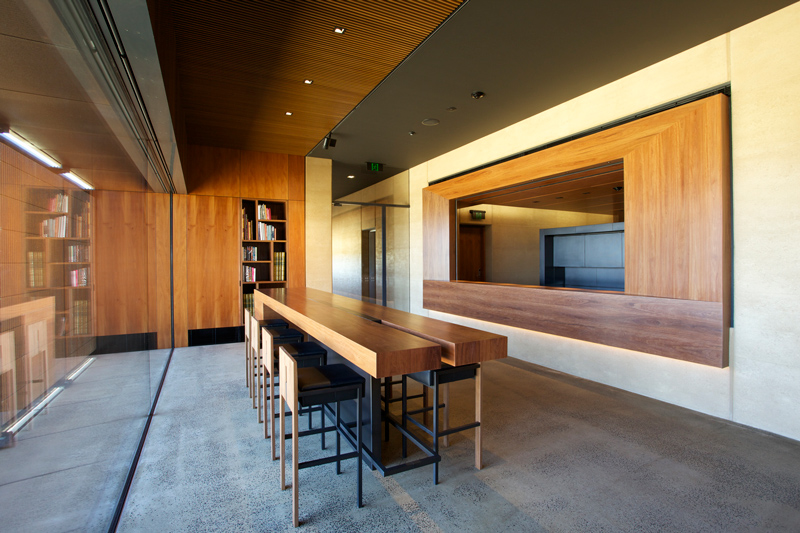
Image © John Gollings
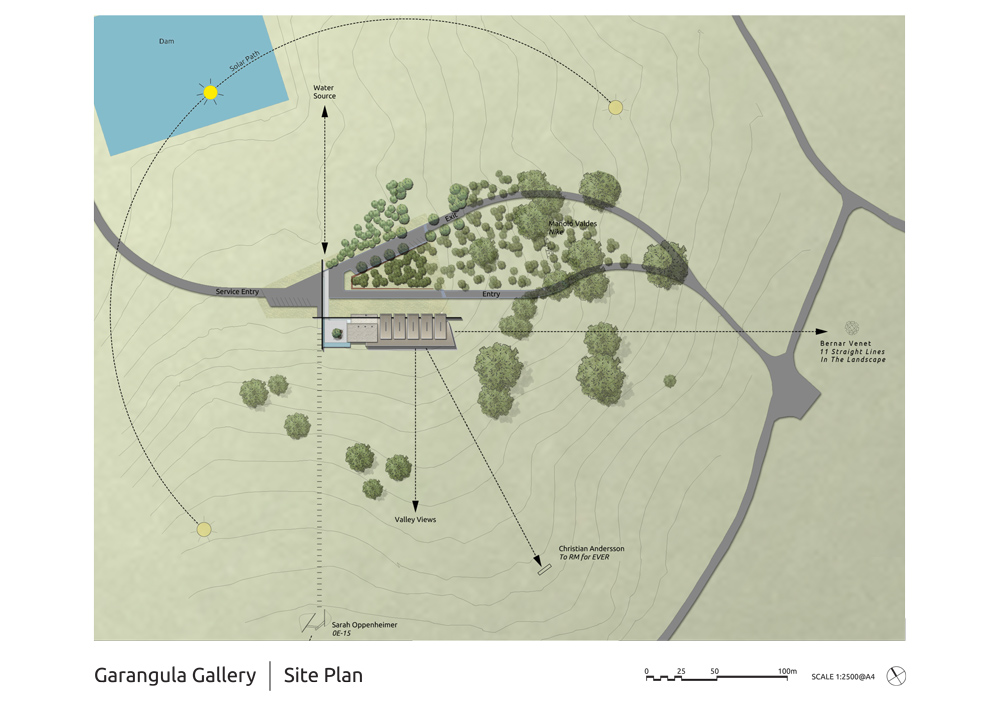
Image © FKM Architects
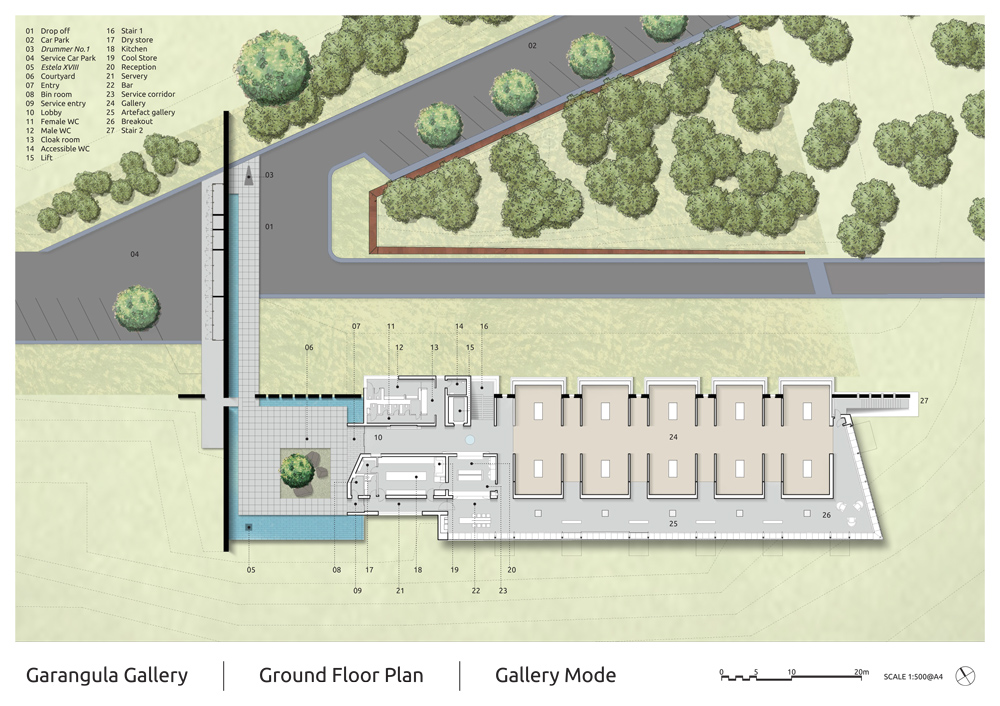
Image © FKM Architects
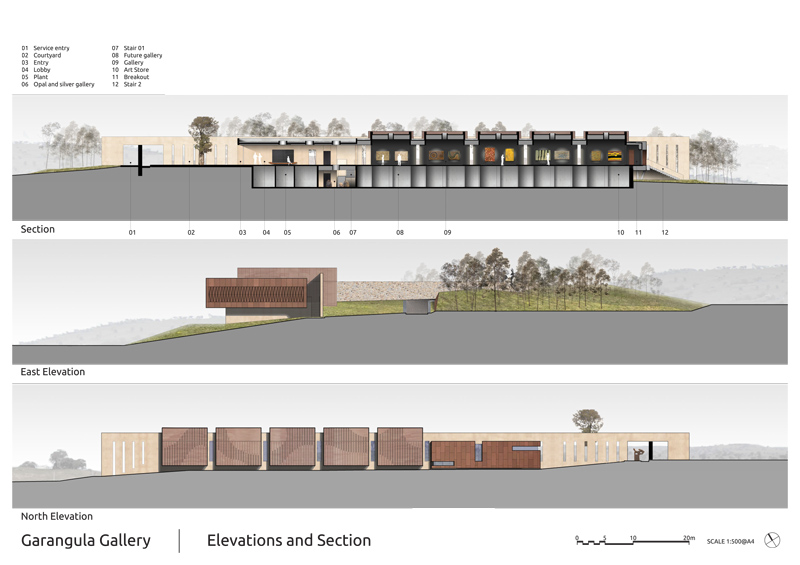
Image © FKM Architects
Facts:
Architecture: Fender Katsalidis Mirams Architects
Location: New South Wales, Australia
Construction: Manteena
Furniture: Space (Acanto dining chair)
Year: 2013
Photography: John Gollings, Maite Robin
*Information via World Architecture Festival.

